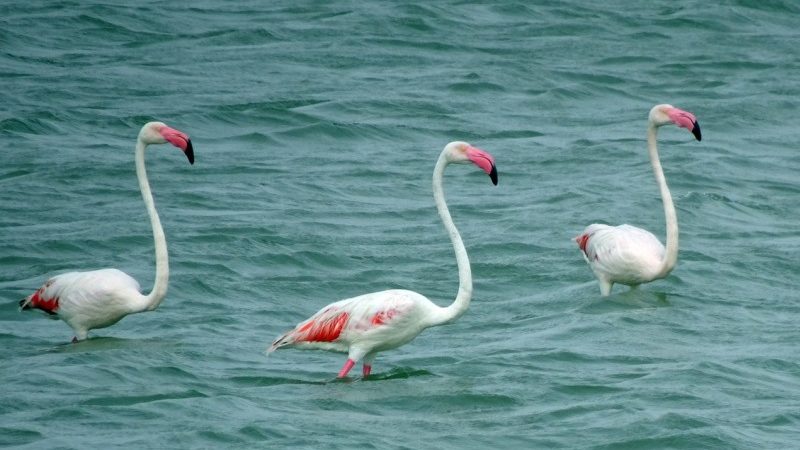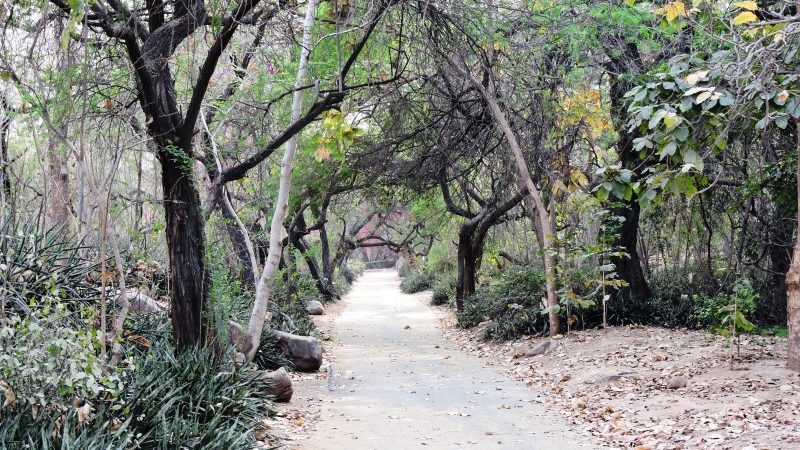Delhi: 100 Years of Being the Capital, Time Now to Save its Lifelines

Delhi, as the National Capital of modern day India turns one hundred years old (or some would say young) today. On 12 December, 1911 the National Capital of the then colonized India was shifted by the British from Kolkata to Delhi. With this, the political focus also shifted and Delhi was re-established as the center for ruling the Indian sub-continent. This was not the first time that Delhi, which has reference dating back to 1450 BC, became a capital.
Between the 12th and the 19th century AD, Delhi was the capital for many rulers. Siri, Tughlakabad, Jahanapanah, Ferozabad, Dinpanah, Shergarh and Shahajahanabad are the historic ‘seven cities’ that took shape in Delhi. Shahajahanabad, built by Shah Jahan between 1639 and 1648 AD remained the capital of the Mughal Empire until 1857. The eighth city, or the present New Delhi, was built by the British Empire and is the one which is celebrating its 100 years today.
What needs to be understood here is the reason that made Delhi the ‘capital-of-choice’ for many a rulers in recorded history. The answer is not too hidden and lies in the city’s landscape and topography. Two characteristic geographic features – River Yamuna and the Delhi Ridge are indeed the reason why Delhi enjoyed the status that it still does.
Now aptly called the lifelines of Delhi, the Yamuna and the Ridge are Delhi’s natural resources that have served the city since time immemorial. While River Yamuna ensures the much needed water which is essential for the survival and sustenance of any settlement, the Ridge, the extension of the Aravali range, provides a natural protection thus making Delhi a site of strategic importance.
The river on one side and the Ridge on the other made Delhi the perfect capital for any man who had a dream to conquer, conquest and rule. It is a matter of separate discussion that any man who made Delhi his capital could not really last his rule.
Delhi today manifests the symptoms of uncontrolled urbanization with respect to population, transport, industrialization and trade, and commercialization. The city, made initially to cater to 70,000 people has grown outward to host over 16 million people in the present day.
This has put understandable pressure on Delhi’s natural resources and led to depletion in quality of the ecosystem services provided by these. Yamuna is now a drain that flows in one part of the city and is known only because there is a trans-‘Yamuna’. The once continuous Ridge is now split into parts. It lies quiet but is slowly facing ecological crisis of all kinds.
Both the Yamuna and the Ridge have been opened up for construction allowing urbanization to destroy the very “lifelines” that first facilitated it. And now, there is an urgent need to highlight the issues of the river and the Ridge before more damage is done to these.
When the lifelines of a system are damaged, its sustainability becomes difficult and its ability to host life impossible. Delhi’s survival and sustainability is intricately linked to the health of the Delhi Ridge and River Yamuna. The Ridge acts as the green lungs, an air purifier, provides a green refuge and what not. The River brings all forms of water – surface, rain and ground water – for the citizens of Delhi and replenishes us.
But in the hustle and bustle of our daily lives, most of us forget this and remain detached from the essential reality that we too are part of the ecosystem and will be impacted by any unnatural adverse change. It is now time to realize this truth and be more aware and informed about our surroundings. On this 100 year ‘capital celebration’, give Delhi the gift it deserves. Give it some of your time and it will only be an investment in your own future. Here’s a toast to a ‘forever’ Delhi!




we loves you Delhi so much……………
Thanks for sharing the info about capital of India.
Really its a great information for me and I am very proud to be a part of DELHI
i like HISTORY i am a student of delhi university realy like this
Delhi has completed its 100 years……..
but now, we should concern about to make clean Delhi, green Delhi and also save Yamuna
we should not damage our Govt. property …………
so think about our India’s Capital thnx.,,,,,,,,,,
lovely a quiet great Delhi. i have proud to say me a indian who lives in NEW DELHI !!!!!!!!!!!!!!!!!!!!!!!!!!!!
nice to see such a great information. lovely
Home » Articles » Delhi: 100 Years of Being the National Capital, Time Now to Save its Lifelines
Delhi: 100 Years of Being the National Capital, Time Now to Save its Lifelines
Sunday, December 12, 2010, 23:48
Articles11,220 views
14 comments
Delhi, as the National Capital of modern day India turns one hundred years old (or some would say young) today. On 12 December, 1911 the National Capital of the then colonized India was shifted by the British from Kolkata to Delhi. With this, the political focus also shifted and Delhi was re-established as the center for ruling the Indian sub-continent. This was not the first time that Delhi, which has reference dating back to 1450 BC, became a capital.
Between the 12th and the 19th century AD, Delhi was the capital for many rulers. Siri, Tughlakabad, Jahanapanah, Ferozabad, Dinpanah, Shergarh and Shahajahanabad are the historic ‘seven cities’ that took shape in Delhi. Shahajahanabad, built by Shah Jahan between 1639 and 1648 AD remained the capital of the Mughal Empire until 1857. The eighth city, or the present New Delhi, was built by the British Empire and is the one which is celebrating its 100 years today.
What needs to be understood here is the reason that made Delhi the ‘capital-of-choice’ for many a rulers in recorded history. The answer is not too hidden and lies in the city’s landscape and topography. Two characteristic geographic features – River Yamuna and the Delhi Ridge are indeed the reason why Delhi enjoyed the status that it still does. Now aptly called the lifelines of Delhi, the Yamuna and the Ridge are Delhi’s natural resources that have served the city since time immemorial. While River Yamuna ensures the much needed water which is essential for the survival and sustenance of any settlement, the Ridge, the extension of the Aravali range, provides a natural protection thus making Delhi a site of strategic importance. The river on one side and the Ridge on the other made Delhi the perfect capital for any man who had a dream to conquer, conquest and rule. It is a matter of separate discussion that any man who made Delhi his capital could not really last his rule.
Delhi today manifests the symptoms of uncontrolled urbanization with respect to population, transport, industrialization and trade, and commercialization. The city, made initially to cater to 70,000 people has grown outward to host over 16 million people in the present day. This has put understandable pressure on Delhi’s natural resources and led to depletion in quality of the ecosystem services provided by these. Yamuna is now a drain that flows in one part of the city and is known only because there is a trans-’Yamuna’. The once continuous Ridge is now split into parts. It lies quiet but is slowly facing ecological crisis of all kinds. Both the Yamuna and the Ridge have been opened up for construction allowing urbanization to destroy the very “lifelines” that first facilitated it. And now, there is an urgent need to highlight the issues of the river and the Ridge before more damage is done to these.
When the lifelines of a system are damaged, its sustainability becomes difficult and its ability to host life impossible. Delhi’s survival and sustainability is intricately linked to the health of the Delhi Ridge and River Yamuna. The Ridge acts as the green lungs, an air purifier, provides a green refuge and what not. The River brings all forms of water – surface, rain and ground water – for the citizens of Delhi and replenishes us.
But in the hustle and bustle of our daily lives, most of us forget this and remain detached from the essential reality that we too are part of the ecosystem and will be impacted by any unnatural adverse change. It is now time to realize this truth and be more aware and informed about our surroundings. On this 100 year ‘capital celebration’, give Delhi the gift it deserves. Give it some of your time and it will only be an investment in your own future. Here’s a toast to a ‘forever’ Delhi
thx for d info so much
THANX…..for d information, it helped me for my history work 🙂
delhi is dream city its beyond yor imagination
DELHI you are great .Congrats! for completing 100 years on 12 December 2011.
Whats up! I just want to give an enormous thumbs up for the nice data you might have here on this post. I will likely be coming again to your blog for more soon.
http://www.Flooj.com
congrats delhi u r d national capital…..
thank u it helped me in my project
congrats Delhi 100 years!
congratulations delhi!! delhi has wat it takes 2 b a national capital!!
Thank u so much for information bcoz it helped me in project & ya may this trial come into best.All the best.
At least someone is caring for the national capital……………………………
Good post. In the humdrum of daily life, we do forget our social responsibilities. This winter, I’ve changed that by saving a life. Just click to donate a blanket to the homeless somewhere in Northern India and spread the warmth. http://on.fb.me/uninorstw
Good post. In the humdrum of daily life, we do forget our social responsibilities. This winter, I’ve changed that by saving a life. Just click to donate a blanket to the homeless somewhere in Northern India and spread the warmth.
Thx for sharing historical info of Delhi as brief.